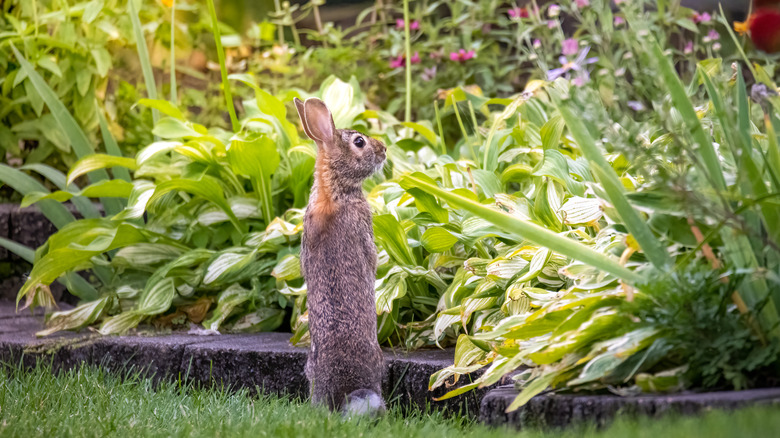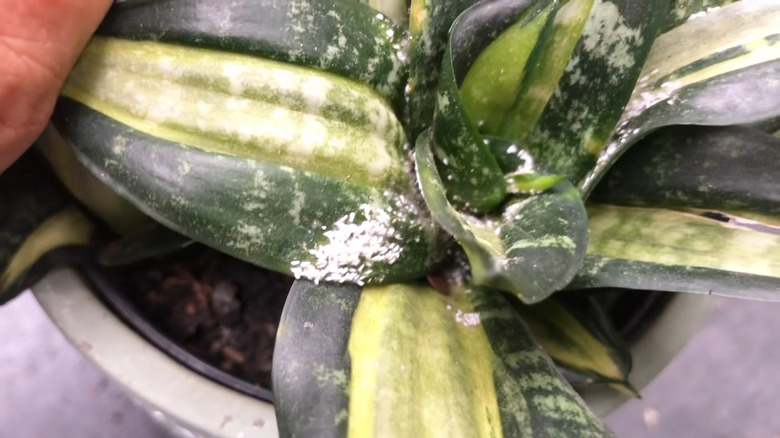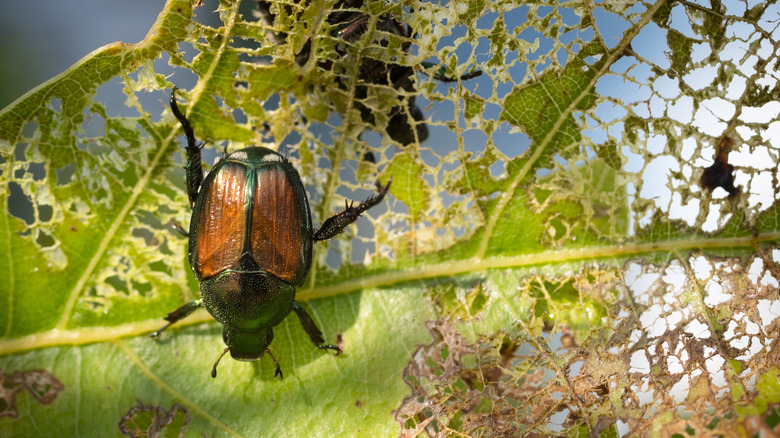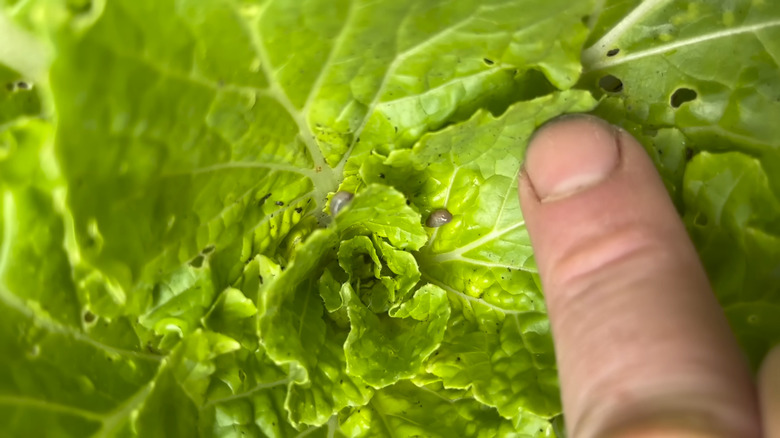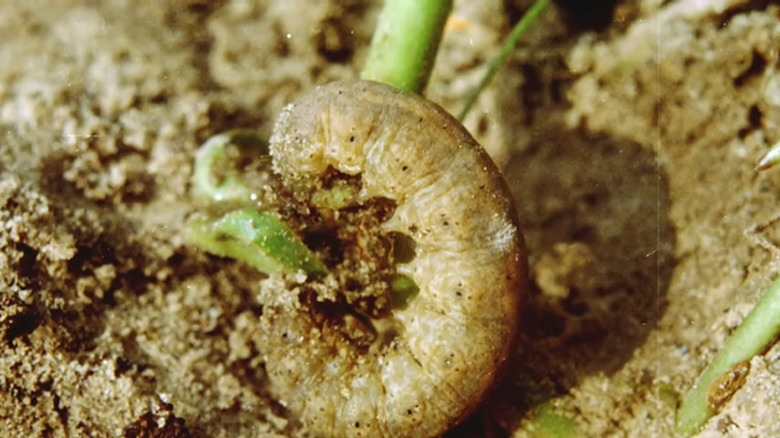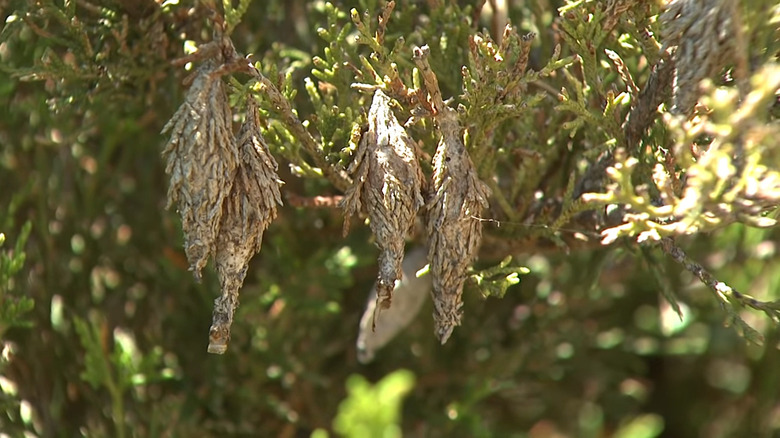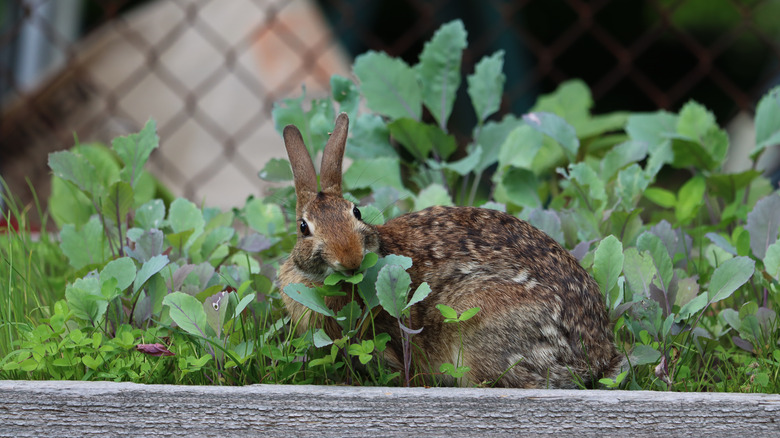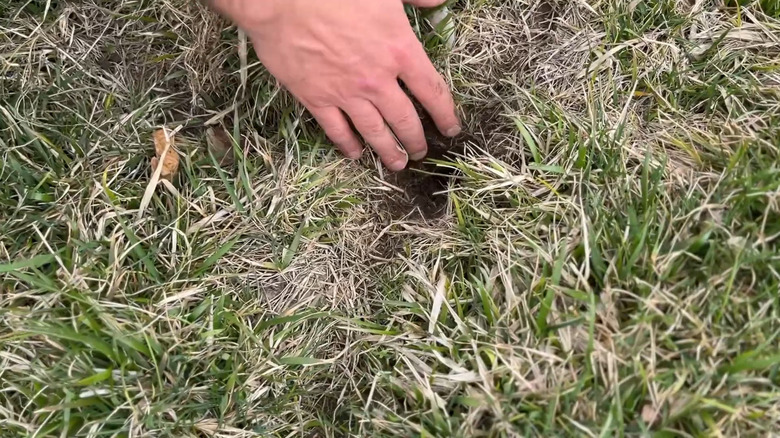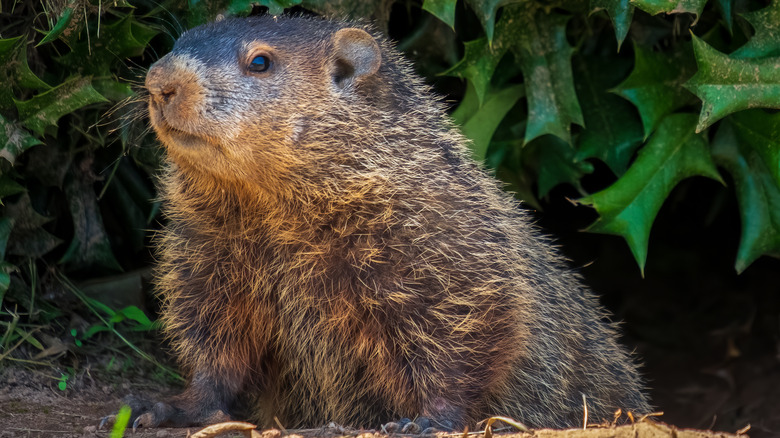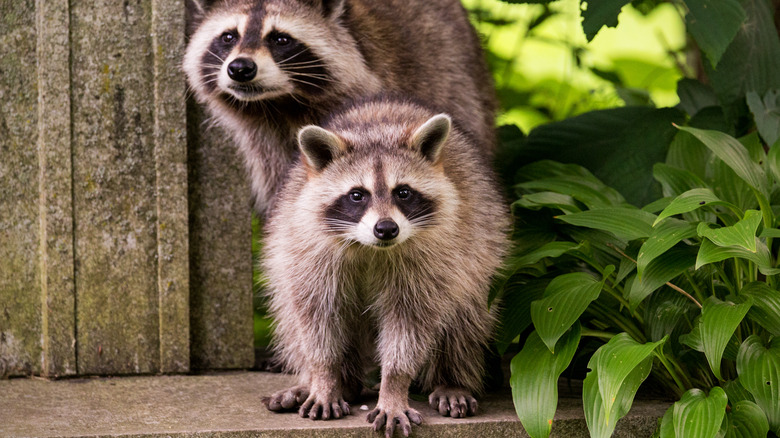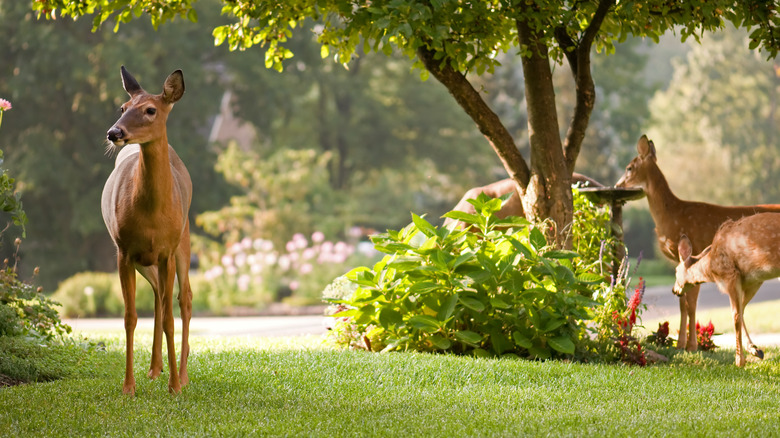How To Know What Animals Are Eating Your Plants
When animals eat the plants in your landscape, vegetable garden, or fruit orchard, it's a frustrating problem for any gardener. You spend valuable time, money, and effort to make your yard and garden beautiful and bountiful. Then, you witness the devastation that insects, invertebrates, or mammalian pests can leave behind.
Frequently, you do not see the animals that feast on your lawn, shrubbery, trees, and vegetable plants. For this reason, you're left to solve the riddle of what animals are eating your plants by observing the type of damage as well as the species of plants that are consumed. Alternatively, you might spot an insect, caterpillar, or small mammal in the garden and identify it by shape, size, color, and other physical characteristics.
Identification is the first step toward ridding your landscape of garden pests. Once you know the type of animals that are causing the damage, you can take steps to get rid of the pests and prevent future infestations.
Signs that mealybugs are feeding on your garden plants
The mealybug gets its name from a characteristic white, powdery coating that has a waxy texture and looks like meal. Each one is only 1/20-to-⅕-inch in length. Although you might not spot the mealy bugs right away, you'll notice that your plants start to droop and lose their healthy vigor. When you turn the leaves over, you'll find the mealybugs congregated on their undersides. Additionally, mealybugs can live in the soil, feeding on the roots of a plant.
Ants and mealybugs enjoy a symbiotic relationship. As they feed on plants, the mealybugs secrete a sugary, honeydew substance that the ants love to eat. For this reason, ants will move the mealybugs from one plant to another in the garden. This causes a spreading effect that can be seen in both outdoor and indoor plants, especially in greenhouses and outdoor environments that are warm and humid.
The honeydew that mealybugs secrete clings to your plants. Look for a coating that resembles white mold on the leaves; it's a sign of mealybug infestation. Additionally, black mold can grow on the honeydew from mealybugs, causing an even greater problem for your plants.
How to identify damage from beetles on the plants in your garden
Beetles are common, six-legged insects with tough bodies, wings for flying, and powerful jaws for eating your plants. They may be brown or black in color, or they might display bright, iridescent hues on their hard, shell-like bodies. With an abundance of different types, beetles feed on fruit trees, garden vegetables, and flowering ornamental plants.
The larvae of Japanese beetles live underground in your lawn, and brown sections of dying grass may indicate an infestation. But when adult Japanese beetles feed on your plants, it's easy to spot the metallic, bluish-green color on their half-inch-long bodies. They gather in large numbers on rose bushes, fruit trees, and shrubs, leaving ragged, gaping holes in the plants' leaves.
Flea beetles might infest your vegetable garden, as they love to feed on squash, beans, corn, lettuce, and more. They're smaller than Japanese beetles and display brown, black, and gray coloring. There are several different types of flea beetles, and each one measures only ⅛-to-¼-inch long. As they feed, they leave behind small, irregular-shaped holes in the leaves of plants.
How to know when slugs are feasting on your garden plants
In the early spring, before most insects are active, slugs can wreak havoc on the new seedlings in your garden. They love moist and cool environments, and they feast on tender green growth during the nighttime hours. For this reason, you may not see them in action, but you'll see evidence of slugs when you survey your garden in the early morning.
Slugs can completely devour young garden plants or chew the leaves down to the stems. Alternatively, they leave behind large, ragged holes in leaves, or they create scalloped patterns by taking bites out of the edges. Their favorite foods include the leaves of hostas, asparagus, lettuce, and flowering ornamental plants.
You can identify a slug by recognizing that it is basically a snail without a shell. In addition to ravaging the tender leaves of plants, slugs leave behind a trail of shiny mucus as evidence of their presence. Adult slugs measure from ½-inch to 5 inches in length.
Signs that cutworms are infesting your garden
The name "cutworm" is a bit misleading. They are actually caterpillars, specifically the larvae of moths. Adult moths lay their eggs on plant material in and around your garden, and the cutworms emerge in spring, summer, and fall. Those that hatch in the fall burrow into the soil to await the spring thaw. Then, they come out to feed on the tender, young seedlings and transplants in your garden. These pests can devastate the new vegetable plants in a spring garden, but they enjoy eating flowering ornamental plants, as well.
With a nocturnal feeding habit, cutworms generally hide during daylight hours. However, you might spot cutworms around the bases of your garden plants at dusk or on cloudy days. They range in size from 1 to 2 inches long and display colors of black, gray, brown, green, and bronze. When they're not moving, cutworms curl up into a coiled shape.
When cutworms feed on plants, they wrap their bodies around the central stem. Consequently, they cut the stems off just above the soil line, killing the plants. When you notice young plants that are broken off at their bases, it's possible that cutworms are responsible for the damage. New, tender growth is particularly susceptible to cutworms, as they can easily chew through the central stem.
How to spot bagworms on your garden plants
Bagworms are moth caterpillars that hatch from eggs in the late spring. Using their own silk along with plant material from their host plants, bagworms build cocoons that they live in throughout the summer. During that time, they feed off their host plants, causing stress and damage to the plants. While they can feed on any type of plant, bagworms show a preference for evergreen trees and shrubs.
The cocoons of bagworms resemble brown bags that hang from the branches of plants. Their appearance is camouflaged by the plant, and the bags might be mistaken for pine cones. The caterpillars like to build their bags in the hidden recesses of shrubbery, and if the foliage is thick, you might need to move branches for a closer look. You may even observe a bag moving as the caterpillar feeds on the host plant.
Perform a careful inspection of your plants in the late fall or winter, before the bagworms have a chance to lay eggs for the coming spring. To end the infestation, pick off any bags you find and destroy them, removing the debris from the area.
Ways to tell if rabbits are eating your garden plants
Thumper was a cute and cuddly character in the "Bambi" movie, but his descendants are devouring the harvest that you hoped to reap from your garden. Rabbits are well known for feasting on the plants in vegetable gardens, including beans, peas, beets, carrots, and more. Additionally, they eat a variety of flowering plants, and they're especially fond of tulips in the spring. When rabbits eat tender, green plants, they generally sever the stems with a clean cut at a 45-degree angle. This type of damage can be a sign that rabbits are eating your plants.
While rabbits might be drawn to the tender green foliage in your garden, they also demonstrate a preference for gnawing on the bark of trees and woody shrubbery. They prefer chewing on the thin bark of young trees and shrubs to access the tasty, green food source that lies just below the surface.
If you notice clipped vegetable plants and gnawed bark that extends upward no more than 3 feet off the ground, it's a good bet that rabbits are the culprits. Additionally, you might find piles of the small, round droppings that rabbits leave behind, allowing you to identify their presence.
Signs that voles are feeding on the plants in your garden
Voles are small, herbivorous rodents that average 4-to-8 inches in length. They live in underground colonies, and some types of voles forage for food underground while others forage above ground. Voles resemble mice and are sometimes mislabeled as "field mice."
Voles destroy lawns as well as the plants in your garden by eating the underground roots and bulbs. They also like to gnaw on the bark of woody plants. Especially during the winter months, voles chew on the branches of landscape shrubbery. Juniper bushes are the tastiest treat on the voles' menu, but they also chew on the branches of perennial plants and rose bushes. When voles chew off the bark, girdling the branches, the plants die. In fact, voles can kill young trees by girdling their trunks.
Voles are active throughout all seasons of the year. They burrow underground to create tunnels, and the ground may feel soft and spongy in the areas where vole tunnels exist. The openings to the vole tunnels typically measure 1 to 1 ½ inch in diameter.
How to identify whether groundhogs or gophers are eating your plants
An average groundhog can grow to be 25 inches in length and weigh between 7 and 14 pounds. These herbivorous mammals burrow deep underground, digging tunnels up to 12 inches wide. As a result, you might notice mounds of soil next to tunnel entrances, indicating groundhog activity. After hibernating during the winter months, groundhogs venture above ground to feed on the veggies in your garden. Their favorite treats include lettuce and cabbage as well as corn, zucchini, green beans, and cucumbers. If you see tracks in your garden soil that show four clawed toes on the front feet and five clawed toes on the back feet, you'll know that you have a groundhog problem.
Gophers are smaller animals, measuring only 6-to-8 inches in length. They build intricate networks of tunnels located 6-to-12 inches underground. As they dig, gophers push the soil to the surface, creating mounds of soil that are visible throughout an infested area. One tunnel system can cover several hundred square feet of underground territory in a labyrinthian design. Gophers seldom venture above ground. They eat the roots of herbaceous (non-woody) plants, including vegetables, perennials, and annuals. Occasionally, gophers emerge from their underground homes to chomp on nearby plants and pull them into their tunnels.
Telltale signs that raccoons are raiding your garden
If you've never experienced the damage that raccoons can perpetrate, you might think the furry, masked creatures are cute. But these clever, nocturnal bandits can wreak havoc in your lawn and garden. They demonstrate agility in climbing and jumping to access food sources, and they're large enough to do significant damage. The average raccoon may grow to be 2-to-3 feet in length and weigh up to 30 pounds.
Raccoons are omnivorous, so they'll eat the grubs in your lawn as well as the vegetables and fruits that you tend so carefully in the garden. In search of insects to eat, raccoons will dig holes in mulch piles and lawns. If they're not satisfied with the produce in your garden, raccoons will eat the contents of your garbage cans as well as tasty items in the compost pile.
One of the unique characteristics of raccoons is the presence of five toes on each of their four feet. In fact, their front feet look almost like tiny, human hands. With surprising dexterity, raccoons can manipulate objects to access food. If you suspect raccoons in your garden, look for five-toed tracks in the soil.
Signs that deer are consuming your garden plants
There's no doubt that deer are graceful and beautiful creatures, but they can cause significant damage to your landscape plants as well as consume the produce from your vegetable garden and fruit orchard. They can leap over tall fences and consume vegetation up to 5 feet off the ground. Deer are herbivorous, and they're especially hungry in the spring when the females are pregnant or nursing their fawns and the males are growing antlers. Your tender, new plants in the vegetable garden and ornamental borders beckon the deer who live in your area.
You might not see deer during the daylight hours; they're on the move and actively feeding at dusk and dawn. You can spot the damage from deer by noticing that foliage is torn from the plants, leaving jagged edges. This happens because deer do not have upper incisors in their mouths, causing them to tear off vegetation, rather than biting it. With two toes on each hoof, deer leave tracks that resemble heart shapes. Additionally, their droppings of hard, clustered, marble-size balls indicate the presence of deer.
